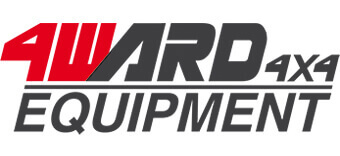Defender suspension – what is important?
Suspensions are available on the market in all price ranges and in every quality. First, you should be clear about the field of your Land Rover Defender. How do you use your car? Do you use it often for long distance travel, off-road Trophy, Rally Raid, on streets and roads, mainly in the field, when working with a trailer or just for the trip to the ice cream shop? Do you have for example a living trunk, which is only occasionally mounted on the vehicle? First, you should carefully consider what requirements are placed on the suspension.
Then the question arises: How much can and want you invest?
Lift kit on the Land Rover Defender – Technical details of the suspension
The most complete suspension kit for the Land Rover Defender consist of 4 shocks and 4 springs. The customer enjoys to install the lift kit in his Defender and at the latest after the first test drive follows a rude awakening. This massive change in suspension geometry causes strong vibrations in the drive train, especially with the Defender from year 2007. During braking, the car pulls slightly to the right, the articulation of the front axle is also changing and the driving dynamics is changing significantly. Each lift kit, that raises your Defender more than 25 mm, requires a correction of the entire suspension geometry. These include the so-called trailing arm (push rods and tie rods) and the Panhard rod. The flexion angle of the propeller shaft also changes the wear of the universal joints and the bearing of the transfer case increases significantly.
Tested Defender suspension = more security – Suspensions for the Land Rover Defender with TUV parts certificate
Components from low-cost providers are gladly installed. Not all parts of it may be inferior, apart from the quality of the workmanship, but all suspension components are without TUV approval test. When obstruct of safety-related suspension components without TUV approval or general operating permit (ABE), the operating license of the user will void with immediate effect. For example: When it is found, in a traffic accident with a lifted Land Rover Defender, that changes have been made to the suspension without TUV registration, liability insurance will reclaim the amount of damage from the vehicle owner. In an accident, with subsequent inability to work or even a fatality, this can mean the financial ruin.
What parts need to be tested in a Land Rover Defender suspension by TUV?
The following components of a Defender chassis as suspension springs, push rods, Panhard rod, tension and longer brake hoses may need to be supplied with a TUV parts certificate or type approval. All other parts, such as bumpers or bushes, need no certificate.
Whereon have I need to pay attention with a Defender lift – Here is a summary:
- Complete suspension with all components – avoid evil surprises
- Parts tested by the TUV – ensure the operating license for the vehicle
- Quality OEM manufacturers such as Eibach, Bilstein or Sachs – durability and consistent quality
What qualities do I want to achieve with my new Defender suspension?
Most customers would like to have all the advantages in one: Suspension Lift Kits, comfort, sporty on the road, more entanglement, no change in height in payload, etc. Unfortunately, this is technically very difficult to implement due to physical reasons or only with sophisticated shock absorber technology and air spring support feasible. Therefore, you should decide for one of the following options:
- comfortable, plenty of entanglement, less payload
- athletic and toned in the on-road mode
- less comfortable and tight, but with a lot of possible payload
However, other solutions and opposing chassis characteristics are also possible, but with more sophisticated shock absorbers (adjustable), air springs, auxiliary springs or so-called inconstant or progressive springs.
